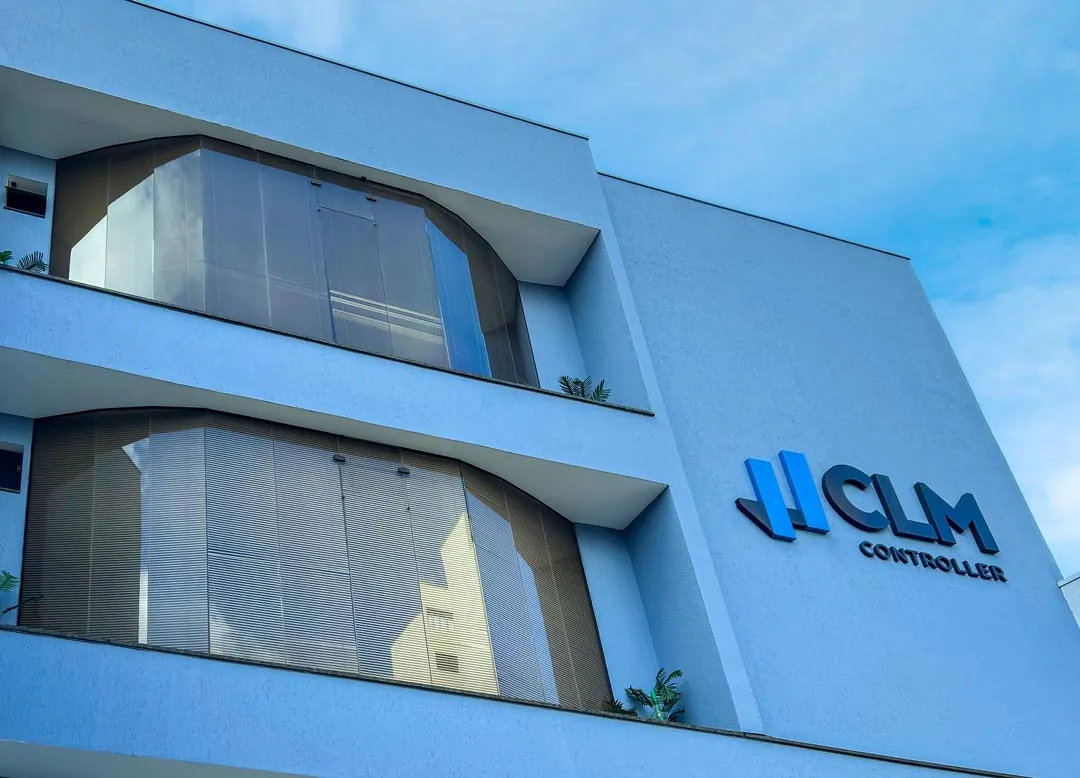Do you know how taxation works for service providers and what you can do to pay less tax? If you have any questions on the subject, you've come to the right place.
In this article CLM Controller will detail taxation for service providers who work as individuals and as legal entities. It's worth a look!
Listen to our podcast where Rodrigo and Bea share practical tips for reduce taxes legally and strategically.
Taxation for individual service providers
Service providers working as individuals (without setting up a CNPJ) are taxed according to the progressive table of the Individual Income Tax (IRPF). The rates increase according to the income bracket, reaching up to 27.5% at the bottom.
See the current monthly IRPF table:
| Calculation basis | Rate | Portion to be deducted |
|---|---|---|
| Up to 2,259.20 | Exempt | Exempt |
| From 2,259.21 to 2,826.65 | 7.50% | R$ 169.44 |
| From 2,826.66 to 3,751.05 | 15% | R$ 381.44 |
| From 3,751.06 to 4,664.68 | 22.50% | R$ 662.66 |
| Above 4,664.68 | 27.50% | R$ 896,00 |
Table 1: Monthly Personal Income Tax table applicable in 2024
Note that monthly values above R$4,664.68 are subject to the maximum rate of 27.5%, with a fixed portion of R$896.00 to be deducted when calculating the tax.
In addition to the IRPF, the self-employed professional normally need to contribute to the INSS as an individual taxpayer and is also subject to the ISS (Service Tax) municipal rate (usually between 2% and 5% on the value of the service). For example, a self-employed person might pay around 5% of ISS on their services, depending on the city, in addition to the monthly INSS.
These obligations, coupled with income tax, mean that acting as an individual generally results in a high tax burden. Undoubtedly, this is not the most economical option when your income increases, as the deductions are limited and the progressive IRPF rates can take a significant slice of your income.
Exception - MEI: For service providers with invoices very lowit is worth considering formalization as Individual Microentrepreneur (MEI)This is a simplified category within Simples Nacional.
MEI allows you to issue CNPJ and pay fixed monthly taxes (independent of profit) as long as the annual turnover does not exceed R$ 81.000,00.
In 2024, the DAS-MEI of service providers is around R$ 75.60 per month, including 5% of the minimum wage for the INSS e R$ 5.00 ISS fixed. In other words, even earning close to the annual limit (R$ 81,000), the MEI will pay less than R$ 1,000 in taxes for the whole year - an effective burden below 1.5% of sales!
For those who fall under the MEI rules (permitted activities and no partners), this is the cheapest form of taxation. On the other hand, those who exceeds the MEI limit or carries out activities that are not permitted will have to move to conventional tax regimes (such as Simples Nacional, Lucro Presumido or Lucro Real).
Taxation for service providers in Simples Nacional

O Simples Nacional is a tax regime that can be used by service providers who have a CNPJ and earn up to R$ 4.8 million a year.
Under this system, the contribution rate will take into account the annual turnover of the company providing services and the type of activity it carries out.
There are three possible annexes with rates for calculating taxes in the area of services. Check with our accountants to see which of the options your type of activity is taxed on.
Annex III
| Track | Revenue in 12 months | Rate | Amount to be deducted |
|---|---|---|---|
| 1ª | Up to 180,000.00 | 6.00% | -- |
| 2ª | From 180,000.01 to 360,000.00 | 11,20% | R$ 9,360.00 |
| 3ª | From 360,000.01 to 720,000.00 | 13,20% | R$ 17,640.00 |
| 4ª | From 720,000.01 to 1,800,000.00 | 16.00% | R$ 35.640,00 |
| 5ª | From 1,800,000.01 to 3,600,000.00 | 21.00% | R$ 125.640,00 |
| 6ª | From 3,600,000.01 to 4,800,000.00 | 33.00% | R$ 648.000,00 |
Annex IV
| Track | Revenue in 12 months | Rate | Amount to be deducted |
|---|---|---|---|
| 1ª | Up to 180,000.00 | 4.50% | - |
| 2ª | From 180,000.01 to 360,000.00 | 9.00% | R$ 8,100.00 |
| 3ª | From 360,000.01 to 720,000.00 | 10,20% | R$ 12,420.00 |
| 4ª | From 720,000.01 to 1,800,000.00 | 14.00% | R$ 39.780,00 |
| 5ª | From 1,800,000.01 to 3,600,000.00 | 22.00% | R$ 183.780,00 |
| 6ª | From 3,600,000.01 to 4,800,000.00 | 33.00% | R$ 828.000,00 |
Annex V
| Track | Revenue in 12 months | Rate | Amount to be deducted |
|---|---|---|---|
| 1ª | Up to 180,000.00 | 15.50% | -- |
| 2ª | From 180,000.01 to 360,000.00 | 18.00% | R$ 4.500,00 |
| 3ª | From 360,000.01 to 720,000.00 | 19.50% | R$ 9.900,00 |
| 4ª | From 720,000.01 to 1,800,000.00 | 20.50% | R$ 17.100,00 |
| 5ª | From 1,800,000.01 to 3,600,000.00 | 23.00% | R$ 62.100,00 |
| 6ª | From 3,600,000.01 to 4,800,000.00 | 30.50% | R$ 540.000,00 |
Important: Contrary to what many people think, Simples Nacional is not always the most economical option for service providers in any situation.
Although it offers practicality and, in fact, benefits companies from smallerAs turnover and the type of service increase, the Simples tax burden can approach (or even exceed) that of other regimes.
For example, activities included in Annex V, with high turnover and low expenses, can end up paying a significant percentage of their revenue in Simples taxes. In these cases, it is essential to evaluate alternatives such as Presumed Profit - which we will see below - where taxation can be lower after a certain level of revenue.
Rodrigo Ribeiro
Taxation for service providers under Presumed Profit
O Presumed Profit is a tax regime that can be used by service providers who have a CNPJ and earn up to R$ 78 million a year.
In addition, while in Simples Nacional taxes are paid in a single monthly payment, with rates that vary according to turnover.
In Presumed Profit, each tax is paid in its own form and the rates are fixed, i.e. they do not vary with the growth in turnover.
The basic list of Presumed Profit rates is as follows:
- IRPJ: 15%
- CSLL: 9%
- PIS: 0.65%
- COFINS: 3%
- ISS: 2% to 5%
At first, the IRPJ and CSLL rates may catch your eye, but they are not calculated on company turnover but on a percentage of it, i.e. the famous Presumed Profit.
Below we present two tables with the presumption rates, one for IRPJ and the other for CSLL.
IRPJ - Corporate Income Tax
| Activities | Rate |
|---|---|
| Freight Transportation Service Real Estate Services Hospital Services Rural Services. | 8 % |
| Transportation services (except freight) General Services (with gross revenue up to R$ 120,000/year) | 16% |
| Professional Services Business Intermediation Services Property Management and Leasing Services - Services in general, for which no specific percentage has been set | 32% |
CSLL - Social Contribution on Net Profit;
| Activities | Rate |
|---|---|
| Hospital Services Transportation Services | 12% |
| Services in general, except hospital and transportation services | 32% |
Therefore, the highest effective rates of IRPJ and CSLL in Presumed Profit for service providers are respectively:
- IRPJ: 4.80%
- CSLL: 2.88%
That said, we can say that the final Presumed Profit rate for service providers can vary from 13.33% to 16.33% on turnover, distributed as follows:
- IRPJ: 4.80%
- CSLL: 2.88%
- PIS: 0.65%
- COFINS: 3%
- ISS: 2% to 5% (depending on municipal legislation).
There's no doubt about it, when it comes to taxation for service providers, the best way to save on paying taxes is to opt for the opening a CNPJ with the guidance of a specialized accounting firm.
Frequently Asked Questions
1. What is the best tax regime for service providers?
It depends on the activity and turnover. Simples Nacional is advantageous for companies with lower revenues and activities with reduced tax rates. Presumed Profit can be more economical for those with low profit margins and lean costs. Real Profit is ideal when there are tax losses or a high volume of deductible expenses.
2. How can a service provider legally pay less tax?
Through tax planningThis includes: choosing the right regime, reviewing CNAEs, taking advantage of credits, separating income by activity, and strategic tax frameworks. A complete diagnosis helps to find these opportunities.
3. Is it worth changing tax regimes over time?
Yes, as long as it's planned. Changes in the company's size, cost structure or legal changes may justify changing the regime. The decision should be based on comparative simulations carried out by a specialized accountant.
4. What common mistakes cause service providers to pay more tax than they should?
-
Wrong choice of tax regime
-
Outdated or inappropriate CNAE
-
Lack of control over costs and deductible expenses
-
Do not separate revenue by type of service
-
Lack of updating with changes in legislation
How to Pay Less Tax Legally: 4 Practical Tips
Even within the chosen regime, there are tax planning that can reduce the tax burden legallywithout tax evasion. Here are four essential tips for service providers to save money within the law:
Choose the right tax regime
Make the right choice between Simple, Presumed Profit or Real Profit is the most important decision. Take into account your expected turnover, profit margin and type of activity. Simples is advantageous for smaller companies and activities with a reduced tax rate, while Lucro Presumido can be more economical for those with a lower tax rate. high profit margins and few deductible costs. Companies with tax losses or many deductible expenses can benefit from the Real Profit regime. Periodically assess whether the current regime is still the best option.
List your activity and CNAE correctly
Check if your company is classified in the CNAE (Activity Code). Sometimes, the same service can fall under different descriptions - some with less onerous taxation. In Simples Nacional, for example, activities in certain annexes pay much less tax.
If it is possible to classify part of your service in an annex with a lower tax rate (or separate the activities into separate companies), this can reduce the tax burden. Always keep your registration up to date and in compliance with the law, but explore more advantageous legal frameworks.
Take advantage of tax incentives and deductions
In Presumed Profit and Real ProfitHowever, you should be aware of credits and deductible expenses. In Presumed Profit, although the base is fixed, you can deduct certain incentives from IRPJ/CSLL (such as cultural sponsorship via the Rouanet Law, for example) or use PIS/COFINS credits if you are in the non-cumulative regime (a specific case for some companies).
In Real ProfitIt is essential to account for all expenses necessary for the business, as they reduce taxable profit and therefore taxes. Expenses for payroll, inputs, rent, business travel, training, among others, can be deducted according to tax rules - ensuring that you only pay tax on the remaining real profit.
Have good financial control and keep up with legislation
Common mistakes that lead providers to pay more taxes include organizational failures and legal ignorance. Keep a strict billing control so as not to exceed the limits of your regime (avoiding surprise disqualification from Simples, for example). Also keep track of costs and expenses - this helps both to justify deductions in the Real Profit and to assess whether the presumed profit matches your reality.
Separate revenues by type of service/product if your company operates in different activities, as there may be different tax treatments (such as different ISS rates or Simples annexes). Finally, keep up to date with changes in tax legislation.
Tax laws and regulations change frequently in Brazil; new income tax bands, updates to Simples limits, the creation of incentives or changes to tax rates can all have a direct impact on your business. Being informed allows you to react quickly - either by taking advantage of a recent tax benefit or by adapting to avoid penalties.
By following these strategies and relying on professional guidance when necessary, it is possible to significantly reduce the weight of taxes on your service business, in a 100% legal way. Tax planning, when done well, identifies savings opportunities that often go unnoticed in everyday life.
How does CLM Controller help service providers save money?
CLM carries out a complete diagnosis of the company's operations and tax structure, assessing the best regime, reviewing accounting procedures and proposing strategic adjustments. The aim is to reducing the tax burden with legal certainty and improving financial management.
If you are a self-employed service provider or own a service provider company and would like to save money on paying taxes, click on the WhatsApp button and contact us!
We serve companies in all parts of the country, always looking for the best tax-saving solutions.
Check out some of our services:
- Guidance and advice on starting a business;
- Calculating taxes and issuing tax slips;
- Calculation of pro-labore and payroll;
- Bookkeeping of tax and accounting movements;
- Preparation of the balance sheet and income statement;
- Registering and hiring employees;
- Among other important items.
You can count on our support to help your company go further, avoid problems with the tax authorities, be more profitable and make significant monthly tax savings.












